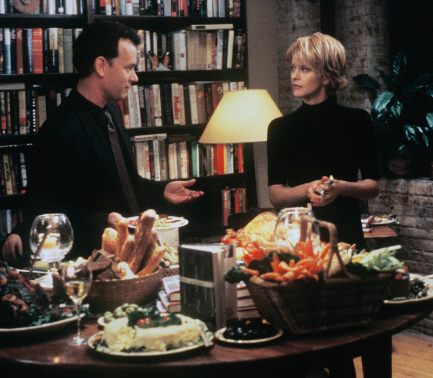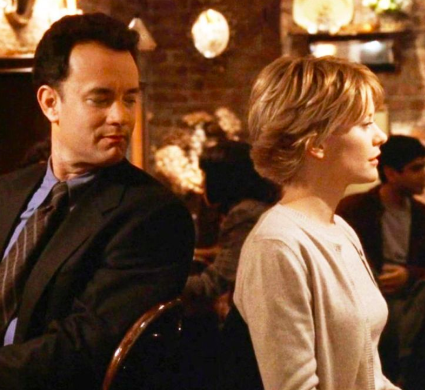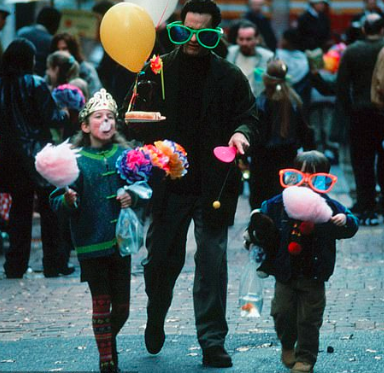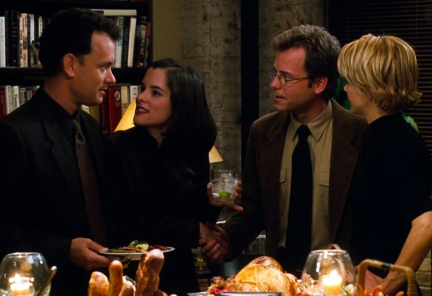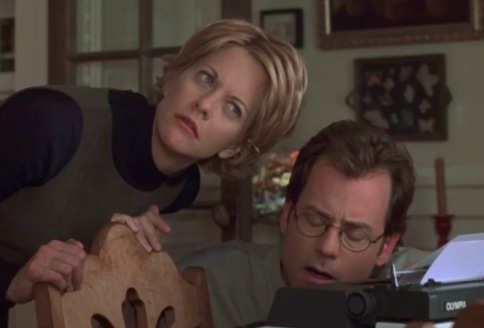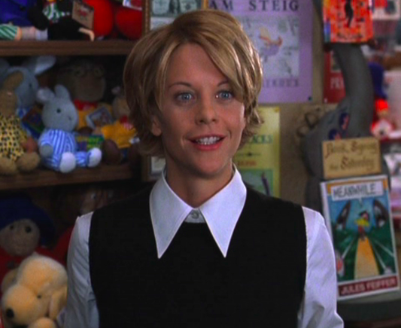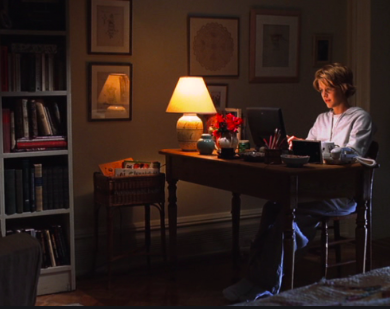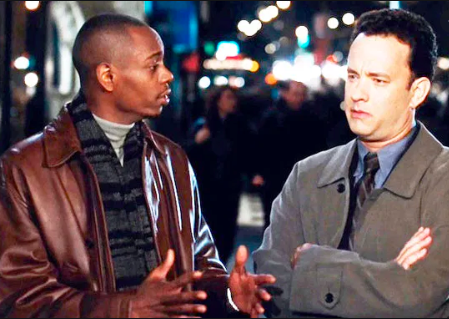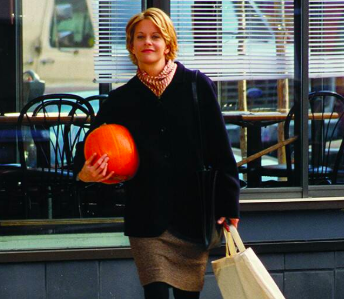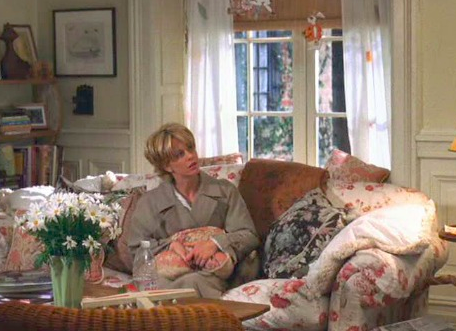“Don’t you just love New York in the fall?”
I often feel compelled to express my annual affection for the autumnal rom-com classic, You’ve Got Mail, and present a case for why it’s one of the most charming love letters to New York City the cinema has ever seen. Or at the very least, a masterpiece of 90s nostalgia.
Why 'You've Got Mail' is the Autumn Inspiration We Need Right Now
So why do I feel the need to defend its very existence? Because it’s one of those movies that just would never be made today. Having worked in film and TV development in Hollywood for many years—a job that requires reading piles of scripts, submitted with pride by hopeful scribes everywhere, and then ripping apart their life’s work in a matter of hours—I can admit that this adorable story would be considered problematic in many ways by the current standards of the industry—and our social climate in general.
So since the late, great Nora Ephron is no longer here to discuss her evergreen autumnal classic and the ultimate feel good flick of 1997, I volunteer as tribute.
Let’s address the problematic parts first, so we can move on to the good stuff.
“That caviar is a garnish!”
1. It’s not a feminist story. In any way.
Women’s rights went through a bit of a latency period between the bra burning 1970s and today’s common era. Living in the pre-social media 90s meant that for many, ignorance was bliss. Things seemed fine on the surface. Those pesky, highly publicized sexual harassment scandals were conveniently brushed aside as soon as the next one cropped up, women seemed equally comfortable at home or at the office, everybody seemed satisfied with their salaries, privilege and diversity weren’t much talked about in Hollywood elite circles—more on that in a minute—because no one had the ability to vocalize such injustices in a public forum quite the way we do today, and ironically, this is a movie about the very technology that would change all of that.
So yes, Kathleen Kelly was allowed to fall in love with a man who savagely destroyed her livelihood and her late mother’s legacy; who essentially ghosted her on their first date by not revealing himself as her online paramour, and then purposely strung her along via some (really charming) instant messaging. Yes, in hindsight, it might have been more satisfying for her to be the one to unmask his identity first and then string him along as an act of revenge for obliterating The Shop Around the Corner, but we all know she’s just too darn nice for that! Also it’s just a movie, so let’s move on.
Yes, in the 90s nothing mattered, so we could say things like that.
I’ll bet you just love that “Mr. Darcy.”
2. Their online meeting is just too coincidental.
Of all the billions of people in the world, what are the odds that your internet pen-pal would turn out to be your real-life nemesis, instead of, say, a 70 year old catfish in Ecuador—or more likely back then, a group of 13 year olds giggling in someone’s basement. The fact that they’re both in fact who they say they are, is a surprisingly modern concept.
“I said we were a goddamn piazza!”
3. Why is Dave Chappelle the only Black person in New York City?
Enough said. But from a casting standpoint, we can throw Ephron a little bit of credit for having the vision to imagine the (then scandal-free) comedy legend as Joe Fox’s business partner and wingman in one of the unlikeliest—and PG rated—roles of his career.
“We are…an American family.”
4. Why does Joe’s 90 year old grandfather inexplicably have an eight year old daughter?
Did he adopt Annabelle, Daddy Warbucks style? Is he in the middle of a bitter custody battle? A single father by choice? Is this a statement on ageism? We need answers!
“Ah, Rose. That is a great name.”
5. “You can do it. Zip zip.”
This is the glib response Joe gives (a then unknown) Sara Ramirez—playing the disgruntled cashier at Zabar’s who won’t accept Kathleen’s credit card after she was too distracted by his presence to read the Cash Only sign, and is subsequently heckled by a bunch of Karens in line behind her. This is a pretty weak attempt—beginning with a cringe-worthy knock knock joke—to give Joe a redeeming moment (or a “Save the Cat” moment as its known in screenwriting lingo) as Kathleen’s would-be knight in shining armor—not to mention, a rather condescending way of speaking to service people. Although I suppose it’s fitting with the arrogant behavior we’ve come to expect at this point in his character arc.
But overall, the implied message here is that being exposed to Kathleen and her compassionate, light-hearted nature melts Joe’s steely, business-minded heart and makes him a better person who stops to smell the daisies, if you will. So we can forgive him for now. Also, a Cash Only line? How 1997!
So, now that we’ve addressed the proverbial elephants in the room, let’s talk about the things that make this movie such a delightful time capsule and an ode to the Autumn in New York that Billie Holliday once sang about.
Hugging! How refreshingly chaste for a modern day romance.
1. It’s rated PG
When is the last time you watched a movie made entirely for adults that was rated even PG-13? I don’t know about you, but I find the absence of profanity and gratuitous nudity quite adorable.
“My breath catches in my chest as I hear those three little words…You’ve got mail.”
2. Dial Up Dialogue
Yes, it’s laughable to go back and remember a time when patience was still a virtue, as we watch Kathleen dial up “the ‘net,” and trigger our Pavlovian responses to those chiming sounds that are forever ingrained in everyone’s nervous systems. But the witty exchanges—”bouquets of sharpened pencils,” anyone?—and Godfather references between Joe and Kathleen are just so charming that it’s easy to forget what a cad he is. Rest in power, AOL.
“You know what always surprised me about Julius and Ethel Rosenberg, is how old they looked.”
3. Parker Posey
Ok, this is the gift that keeps on giving. Cult classic darling Parker Posey as Joe’s hilariously out of touch, publishing maven girlfriend, Patricia, is just too good. Yes, she’s cynical, jaded, neurotic to the point that she “makes coffee nervous,” and is dependent on sleeping pills. But come on, it’s New York! Who isn’t?
“Standing tall, waving boldly, in the corrupt sands…of commerce.”
4. You, Are a Lone Reed.
I didn’t intend for this to be an ode to the supporting characters, but here we are. Greg Kinnear as Kathleen’s lovably egotistical columnist boyfriend is the most hysterical nod to the self-important intellectual West Sider stereotype since Woody Allen’s 1980s hey-dey. He’s verbose. He’s delightfully supercilious. He professes love for his typewriter and romanticizes the notoriously executed Soviet spies Julius and Ethel Rosenberg in historical musings for the Observer. It doesn’t get more on-the-nose than that. Plus, the scene where he flirts shamelessly (and terribly) with a low-budget TV talk show host (played by 90s sitcom fixture Jane Adams) is pure gold.
“No, thank yur.”
“You are…what you read.”
5. The Hair
Meg Ryan’s signature piece-y pixie-shag hybrid is arguably the greatest contender to rival The Rachel for the title of most iconic 90s hairstyle. It went on to be copied by grown women, teenage heartthrobs, and boyband members alike, and will never NOT be adorable.
“I wish I had a river I could skate away on.”
6. The Soundtrack
Everything from the Cranberries’ classic ‘Dreams’ as the musical backdrop for the opening montage, to a handful of Harry Nilsson and Roy Orbison ditties, as well as maudlin Joni Mitchell references, to Stevie Wonder’s cheerful ‘Signed Sealed Delivered’ and the occasional Bobby Darin transitional tune, the film compiles a heartwarming array of melodies, leading up to Nilsson’s sentimental rendition of ‘Somewhere Over the Rainbow’ to close out Kathleen and Joe’s meeting reveal in the final scene.
7. The Cozy Outfits and Pumpkin Accessories
Everything from Kathleen’s oversized sweaters, midi skirts with tights, and bookish cardigans in neutral heues of oatmeal, taupe, and heather gray, to Kevin’s collection of rusty suede and leather jackets, each piece in this wardrobe is so delightfully autumnal and has the festive warmth of all cozy, pre-holiday style—until, you know, the end when it’s suddenly spring and the daisies and linen ensembles arrive.
Also so many black turtlenecks! It would be a shame not to mention these, as they’re a personal wardrobe favorite of mine—and that of every well dressed east coaster, really. Plus the pumpkin is so perfect as a fall fashion accessory, that it might as well be a purse.
I wonder how much this apartment would go for these days.
8. The 90s nostalgia.
Because that’s what we came for, right? Remember when book superstores were once the conglomerate forces to be reckoned with? Joe Fox certainly would have gotten his comeuppance a few years later when Amazon hit the scene like a torpedo, disrupting traditional sales models and leaving a graveyard of brick and mortars in its path—with free shipping to boot.
Better yet, remember going to the movies? Who would have thought that a mere 23 years later, shutting down cinemas would practically become an act of martial law? It’s comforting to look back and remember the days when cartoon concessions sang innocent jingles during the previews— ”You need quiet while the hot dog is singing?!”—and west side brownstone apartments were still affordable and decked out in cottage core florals, overstuffed pillows, and Pottery Barn’s finest.
Is it likely that Kathleen married Joe after the credits finished rolling, divorced him a few years later, and finally got her karmic chunk of the Fox Books fortune? I guess we’ll have to wait for a sequel!
—————————————————————————————————————————————————————

